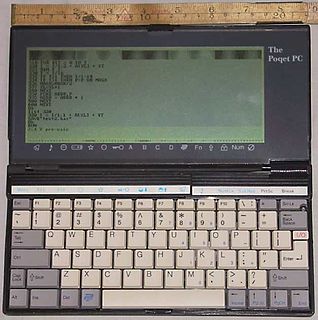BNU is a high-performance communications device driver designed to provide enhanced support for serial port communications. The BNU serial port driver was specifically targeted for use with early (late 1980s - 1990s) DOS-based BBS software. The reason for BNU and other similar enhanced serial port drivers was to provide better support for serial communications software than what was offered by the machine's BIOS and/or DOS being used on the machine. Having serial port support as provided by BNU and other similar drivers allowed the communications software programmers to spend more time on the actual applications instead of the depths and details of how to talk to the serial ports and the modems connected to them. Sending communications data across a modem link was a lot more involved than sending data to a serial printer which was basically all that was originally capable of being done with the existing serial port software support. [1]
In computing, a device driver is a computer program that operates or controls a particular type of device that is attached to a computer. A driver provides a software interface to hardware devices, enabling operating systems and other computer programs to access hardware functions without needing to know precise details about the hardware being used.

DOS is a platform-independent acronym for Disk Operating System, which was initially introduced by IBM for the System/360 mainframe and later became common shorthand for the popular family of disk-based operating systems for x86-based IBM PC compatibles. DOS primarily consists of Microsoft's MS-DOS and a rebranded IBM version under the name PC DOS, both of which were introduced in 1981. Later compatible systems from other manufacturers are DR DOS, ROM-DOS, PTS-DOS, Embedded DOS, FreeDOS (1998), and RxDOS. MS-DOS dominated the IBM PC compatible market between 1981 and 1995.
A Bulletin Board System or BBS is a computer server running software that allows users to connect to the system using a terminal program. Once logged in, the user can perform functions such as uploading and downloading software and data, reading news and bulletins, and exchanging messages with other users through public message boards and sometimes via direct chatting. In the early 1980s, message networks such as FidoNet sprung up to provide services such as NetMail, which is similar to email.
BNU was written by David Nugent as an experimental driver for serial communications following the FOSSIL specification. [2] David released BNU to the public in 1989 and its use in the BBS world spread rapidly. BNU was one of only two or three available FOSSIL drivers for the IBM PC compatible hardware and MS-DOS/PC DOS operating system. Because of this, BNU has been one of the most widely used MS-DOS FOSSIL communications drivers.
FOSSIL is a standard protocol for allowing serial communication for telecommunications programs under the DOS operating system. FOSSIL is an acronym for Fido Opus SEAdog Standard Interface Layer. Fido refers to FidoBBS, Opus refers to Opus-CBCS BBS, and SEAdog refers to a Fidonet compatible mailer. The standards document that defines the FOSSIL protocol is maintained by the Fidonet Technical Standards Committee.

MS-DOS is an operating system for x86-based personal computers mostly developed by Microsoft. Collectively, MS-DOS, its rebranding as IBM PC DOS, and some operating systems attempting to be compatible with MS-DOS, are sometimes referred to as "DOS". MS-DOS was the main operating system for IBM PC compatible personal computers during the 1980s and the early 1990s, from which point it was gradually superseded by operating systems offering a graphical user interface (GUI), in various generations of the graphical Microsoft Windows operating system.
BNU was mainly used with DOS-based Bulletin Board System (BBS) software written in the late 1980s to mid-1990s. It is not used by Windows-based BBS software, but BNU can be used under Windows NTVDM to run DOS-based BBS software under Windows. BNU and other similar drivers were not limited solely to being used in the BBS world. The enhanced capabilities they offered were also used to easily communicate with other serially connected devices for the same reasons that the FOSSIL specification and FOSSIL drivers were originally created. That reason, as noted above, was to separate the details of serial port communications from the actual application. The software's programmers only needed to talk to the serial driver in a standardized way to send and receive their data.
Virtual DOS machines (VDM) refer to a technology that allows running 16-bit/32-bit DOS and 16-bit Windows programs when there is already another operating system running and controlling the hardware.
The name "BNU" was originally a rip-off of AT&T's "BNU UUCP", and in that context meant "Basic Networking Utilities". The author of BNU, David Nugent, felt that the acronym was particularly apt for BNU's function. BNU was also called "Bloody Nugent's Utility" because it was written by David Nugent as one of his many BBS related utilities and it was not known at the time what the acronym "BNU" actually stood for. [2]
The BNUFAQ used to be posted in the Fidonet BNU support echo by the author. This saved text file is the last official posting of this FAQ by David Nugent, BNU's author.






